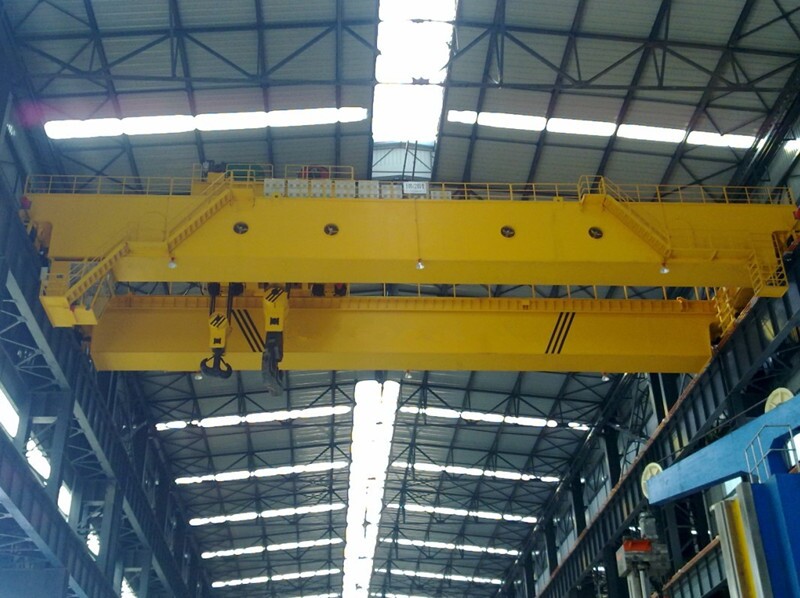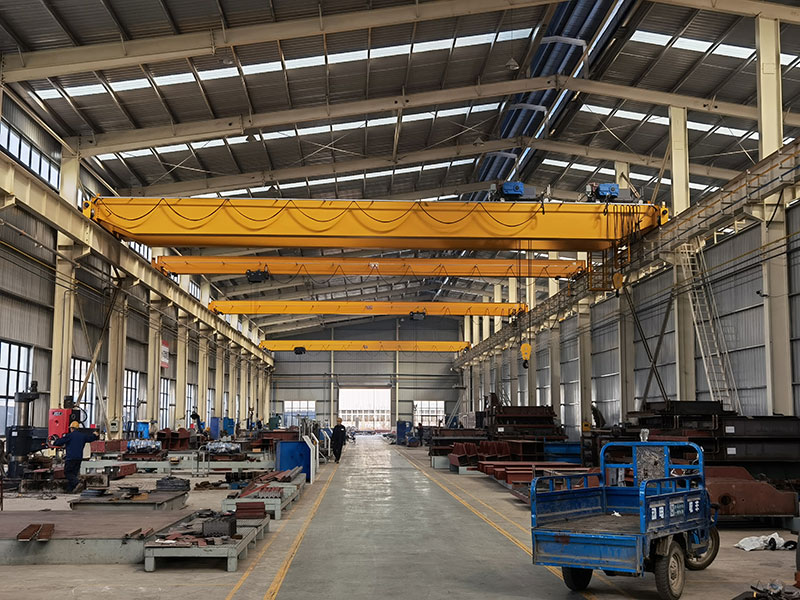Operating a 100 ton overhead crane requires skill, attention to detail, and adherence to safety protocols to ensure efficient and safe lifting operations. Here are six essential tips for operating a 100 ton overhead crane effectively and safely:

Pre-Operation Inspection and Planning
Before starting any lifting operations, conduct a thorough pre-operation inspection of the 100 ton overhead crane and its components. Check the hoist, trolley, bridge, wire ropes, hooks, safety devices, and control systems for any signs of wear, damage, or malfunction. Ensure all safety features such as limit switches, emergency stop buttons, and overload protection systems are functional and in place.
Plan the lifting operation carefully, considering factors such as load weight, center of gravity, lifting height, rigging equipment, environmental conditions, and workspace clearance. Review the lift plan with the heavy duty overhead crane operator, riggers, and other personnel involved to ensure everyone understands their roles and responsibilities.
Proper Load Rigging and Attachment
Proper rigging and load attachment are critical for safe and efficient lifting operations. Use appropriate lifting slings, shackles, hooks, and rigging hardware rated for the load weight and application. Inspect rigging equipment for defects, wear, and proper labeling before use.
Ensure the load is securely attached to the crane hook or lifting device, with balanced weight distribution and center of gravity. Use spreader bars, lifting beams, or custom attachments as needed to stabilize the load and prevent swinging or shifting during lifting.
Safe Load Handling and Movement
When operating the 100 ton overhead crane, follow safe load handling practices to avoid overloading, sudden movements, or jerky stops. Use smooth and controlled movements when lifting, lowering, and moving loads. Avoid sudden starts, stops, or changes in direction that can cause load swings or stress on crane components.
Monitor load dynamics, swing angles, and clearance during lifting operations to ensure safe maneuvering within the workspace. Use hand signals, radios, or communication systems to coordinate with ground personnel and signalers for precise load positioning and placement.
Maintain Clear Visibility and Communication
Maintain clear visibility of the load, crane, and surrounding environment at all times during operations. Position the crane operator’s cabin or control station for optimal visibility of the load, travel path, and work area. Use lighting, mirrors, cameras, or visual aids to enhance visibility in low-light conditions or obstructed areas.
Establish clear communication protocols between the crane operator, signalers, riggers, and ground personnel. Use standardized hand signals, radio communication, or signaling devices to convey instructions, warnings, and emergency alerts effectively. Ensure all personnel are trained in communication procedures and aware of safety protocols.

Monitor Equipment Performance and Condition
Regularly monitor the performance and condition of the 100 ton overhead crane and its components during operations. Pay attention to warning signs such as unusual noises, vibrations, overheating, or erratic movements that may indicate mechanical issues or safety concerns.
Perform routine inspections, lubrication, and maintenance according to the manufacturer’s guidelines and maintenance schedule. Keep detailed records of inspections, maintenance tasks, repairs, and equipment history to track performance, identify trends, and address potential issues proactively.
Adhere to Safety Standards and Regulations
Always adhere to safety standards, regulations, and industry best practices when operating a 100 ton overhead crane. Familiarize yourself with local, state, and national safety regulations, including OSHA (Occupational Safety and Health Administration) standards, ANSI (American National Standards Institute) guidelines, and crane manufacturer recommendations.
Ensure proper training, certification, and qualifications for overhead crane operators, riggers, and maintenance personnel. Provide ongoing training and refresher courses on crane operation, safety procedures, emergency response, and hazard awareness.
In conclusion, operating a 100 ton overhead crane requires meticulous planning, attention to detail, and adherence to safety protocols. By following these six tips for safe and effective crane operations—pre-operation inspection and planning, proper load rigging and attachment, safe load handling and movement, clear visibility and communication, equipment monitoring, and adherence to safety standards—you can enhance operational efficiency, minimize risks, and ensure a safe working environment for crane operators and personnel involved in lifting operations.
